Nakajima Ki-27 Ko
|
Introduction
The Nakajima Ki-27, known to the Allies as "Nate", was a low wing monoplane with a fixed undercarriage and was renowned for its exceptional maneuverability. It is also famous for its service in China and Manchuria and for being one of the first opponents of the AVG - the American Volunteer Group, aka the Flying Tigers.
Imperial Japanese Army markings can be broken down to show the flight, squadron and group that the aircraft belonged to based on the various symbols, stripes and bands an aircraft wore.
-
Sentai (Group) marking was usually worn on the fin/rudder
-
Chutai (company or squadron) was shown by the colour of the Sentai emblem and alos by the colour of the fuselage bands ... ie the 2nd Chutai may have had the emblem and band in red, while the third would have them in another colour.
-
Shotai (flight) would be shown by the number of bands on the fuselage
-
Individual aircraft would often be shown by numbers of Kana symbols worn on the tail
One thing I have noticed is that most illustrations and models of IJA Ki27s show them to be in a light grey, almost offwhite colour, while the various references describe a more pale grey-green - almost akin to a washed out RLM 02. Looking closely at the Hasegawa boxtop, it appears that this does show the correct A5 (light green-grey) or A9 (light grey) finishes.
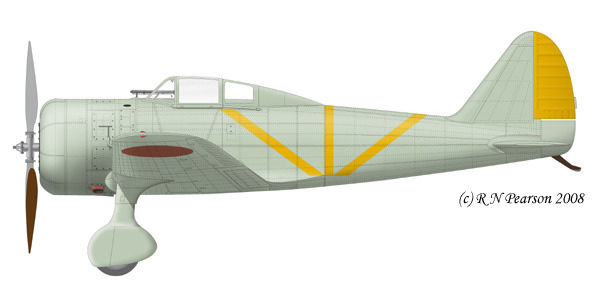 Nakajima
Ki-27 Ko
Nakajima
Ki-27 Ko
1st Sentai, 1st Chutai
Manchuria
1938-39
The 1st Sentai used different colours of fuselage bands and rudder to show the Chutai
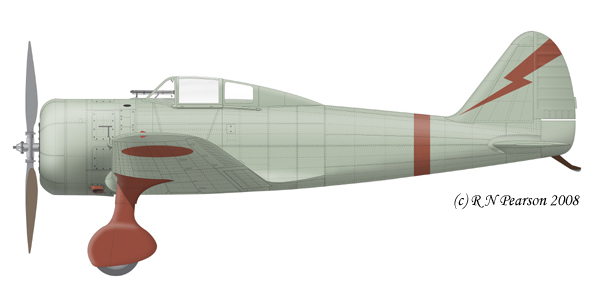
Nakajima Ki-27 Ko
11th Sentai, 2nd Chutai
Manchuria
1938
The 11th Sentai was known as the "Red-legged Hawks" due to their red painted undercarriage.
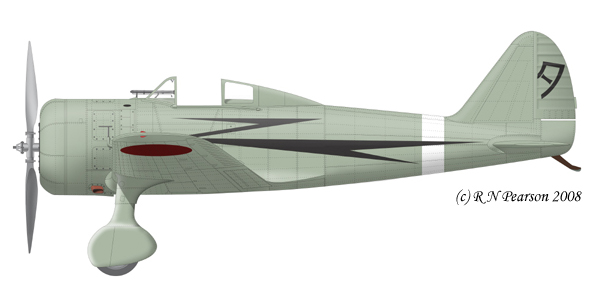
Nakajima Ki-27 Ko
59th Sentai, 2nd Chutai
Manchuria
1939
The 59th Sentai was one of the units that used a fuselage, rather than a tail marking. Of interest is the fact that the pilot of this aircraft flew with the canopy removed. In fact many Japanese pilots chose to do so as other profiles here will show.
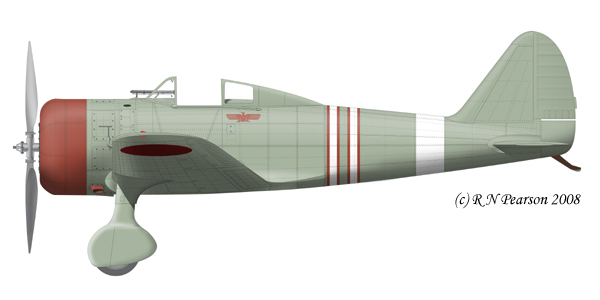
Nakajima Ki-27 Ko
64th Sentai, 1st Chutai
China
1939
At this period the 64th carried a Hawk emblem below the cockpit of their aircraft. Individual aircraft had yellow numbers on their tail, but it was not discernable in the photo used.
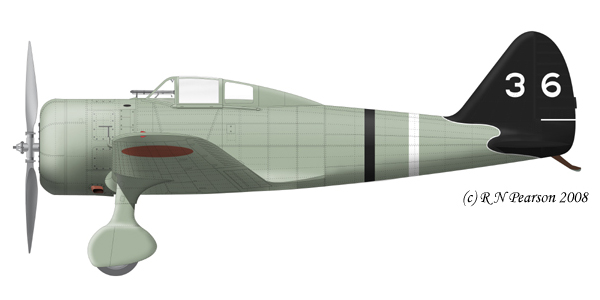
Nakajima Ki-27 Ko
10th Dokuritsu Chutai
China
1939-40
The 10th Independant Company used a black tail as their marking
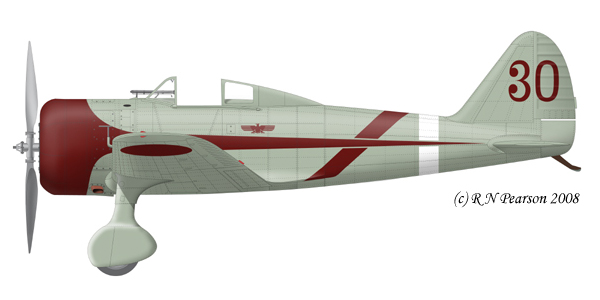
Nakajima Ki-27 Ko
84th Dokuritsu Chutai
China
1938
The 84th was initially formed from the third Chutai of the 64th Sentai and as such continued to use the 64th's hawk emblem. The Sentai marking was a red nose and horizontal stripe on the fuselage, with the various Shotai having different coloured diagonal band and tail number
References:
-
Emblems of the Rising Sun: Imperial Japanese Army Air Force Unit Markings
Peter Scott; Hikoki Publications 1999 -
Japanese Army Air Force Camouflage and Markings WWII
Donald Thorpe; Kookaburra Publications -
Nakajima Ki-27 Nate
Leszek A Wieliczko/Zygmunt Szeremeta; Kagero Publications